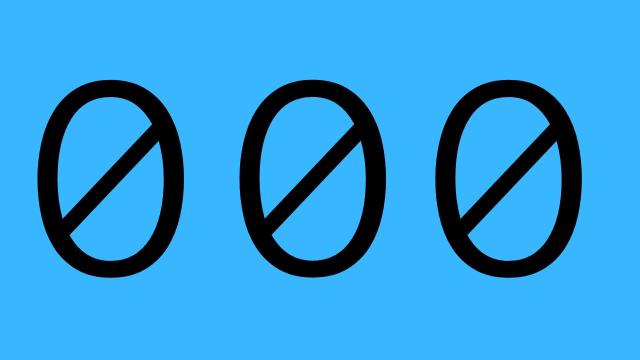Hello, dear readers! Welcome to another edition of Ask Giz, where we take your delightfully Gizmodo-like questions of the nerdy and techy type and we try our best to answer them.
If you’ve got a question for Ask Giz, feel free to submit one. We love tech, science, gaming and space questions.
Today’s question comes from Philip. Philip wants to know:
“When and how did the number zero come about?”
Thanks for your question, Philip! We appreciate your additional message: “The invention of the number zero changed everything in maths and science!”
Too right! The number zero is essential to modern maths and wasn’t actually that common among ancient civilisations (take, for example, Roman numerals, which would keep stacking up and up and up without a definitive “zero” marker).
But let’s get to it: here’s how the number zero came into being.
What is the origin of the number zero?
This is a very historical question and isn’t as maths-heavy as some might think it is, but for zero’s importance to the modern world and especially tech, we’ll entertain it.
Let’s start with the origin of numbers. As Amir Aczel (the author of Finding Zero: A Mathematician’s Odyssey to Uncover the Origins of Numbers) writes:
“Surprisingly, our number system took hold in the West only in the 13th century, after the Italian mathematician Leonardo of Pisa — better known as Fibonacci — introduced the numerals to Europeans. He’d learned them from Arab traders, who presumably adopted them during travels to the Indian subcontinent.”
So that’s where modern numbers come from. But what about zero itself? Let’s allow Robert Kaplan, the author of The Nothing That Is: A Natural History of Zero, explain:
“The first evidence we have of zero is from the Sumerian culture in Mesopotamia, some 5,000 years ago. There, a slanted double wedge was inserted between cuneiform symbols for numbers, written positionally, to indicate the absence of a number in a place (as we would write 102, the ‘0’ indicating no digit in the tens column).”
“The symbol changed over time as positional notation (for which zero was crucial), made its way to the Babylonian empire and from there to India, via the Greeks (in whose own culture zero made a late and only occasional appearance; the Romans had no trace of it at all). Arab merchants brought the zero they found in India to the West. After many adventures and much opposition, the symbol we use was accepted and the concept flourished, as zero took on much more than a positional meaning. Since then, it has played avital role in mathematising the world.”
Well, that’s kind of it for the number zero’s origin. To have a definitive number that not only represents the absence of anything but also represents numbers getting bigger and bigger is a pretty important thing to modern science and technology.
From zero to hero
If you’d like to submit a question to use, feel free to.
Ask Giz is a fortnightly series where we answer your questions, be it tech, science, gadget, health or gaming related. This is a reader-involved series where we rely on Gizmodo Australia’s audience to submit questions. If you have a question for Giz, you can submit it here. Or check out the answer to our last Ask Giz: Are There More Wheels or Doors?
